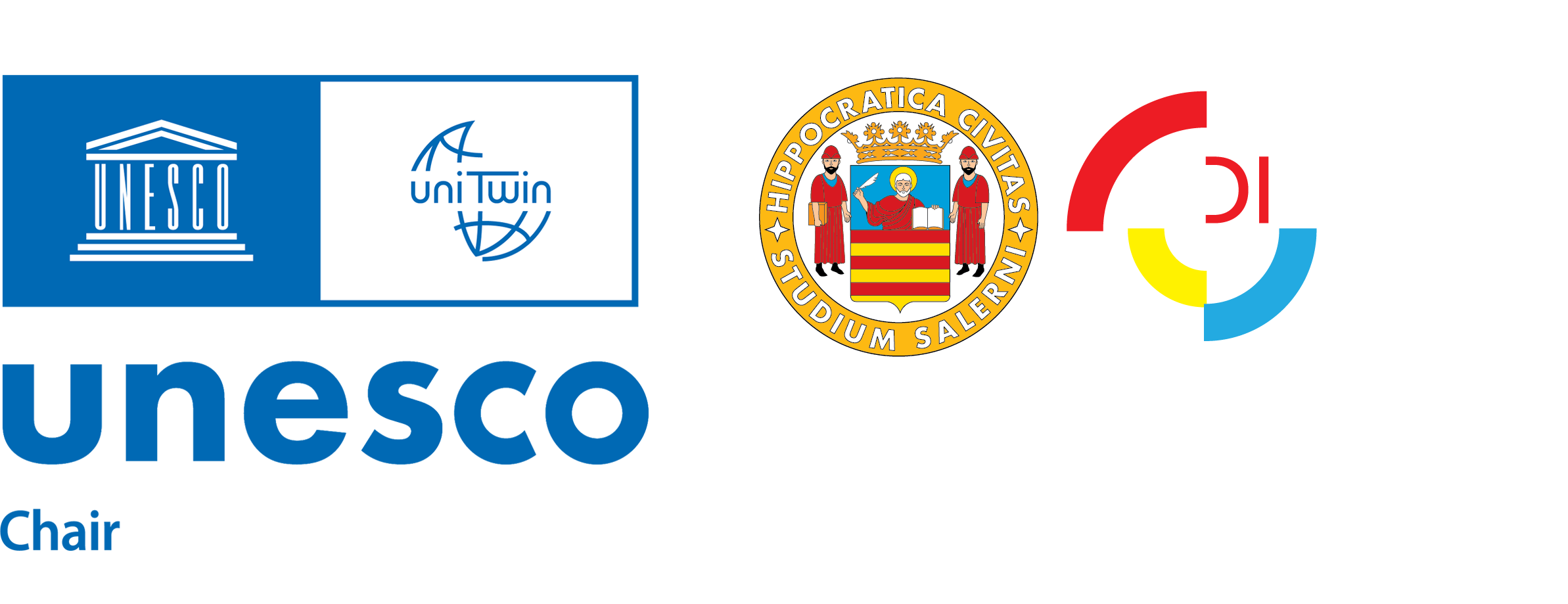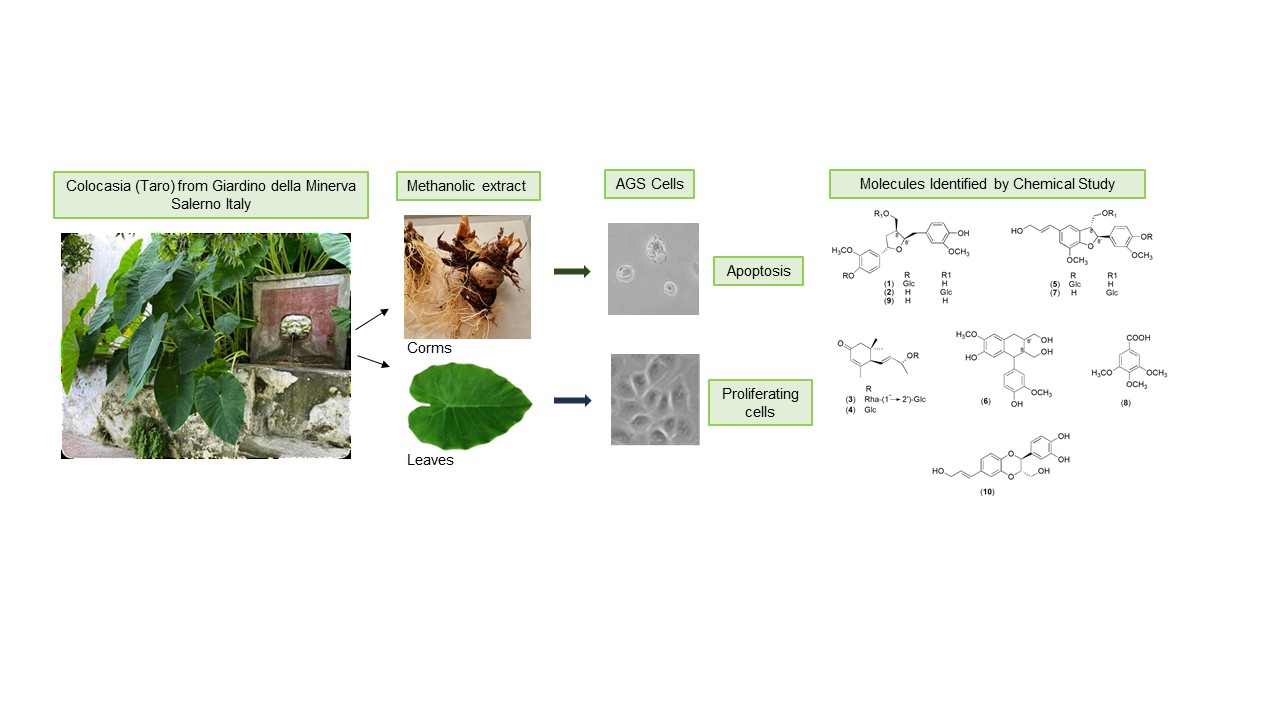The aim of this work was to make a deep analysis of the Mediterranean Colocasia esculenta, predominantly employed as an ornamental plant to embellish fountains and ponds in Giardino della Minerva in Salerno. As the medicinal uses, knowledge of Colocasia dates to the distant Middle Ages, and the plant is mentioned in treatises on medicinal herbs associated with the renowned mediaeval Salerno Medical School. Colocasia is a tuberous plant, also known as taro, employed as food worldwide for its renowned nutritional properties but also traditionally used in several countries for medical purposes. In this study, methanolic extracts were prepared from the corms and leaves of Colocasia, subsequently fractionated via molecular exclusion chromatography (RP-HPLC) and their anti-tumor activity assessed in an in vitro model of gastric adenocarcinoma (AGS cells). Vorm extract and isolated fractions II and III affected AGS cell vitality in a dose-dependent manner through the modulation of key proteins involved in cell proliferation, apoptosis, and cell cycle processes, such as caspase 3, cyclin A, cdk2, IkBα, and ERK. Compounds including lignans and neolignans, some isolated for the first time in taro, uncommon megastigmane derivatives, and a gallic acid derivative. However, none of the isolated constituents showed efficacy equivalent to that of the fractions and total extract. This suggests that the whole Colocasia phytocomplex has intriguing anti-tumor activity against gastric cancer.
Authors: Esposito, T; Pisanti, S; Mauro, L; Mencherini, T; Martinelli, R; Aquino, RP
2023 December 23 – First published



